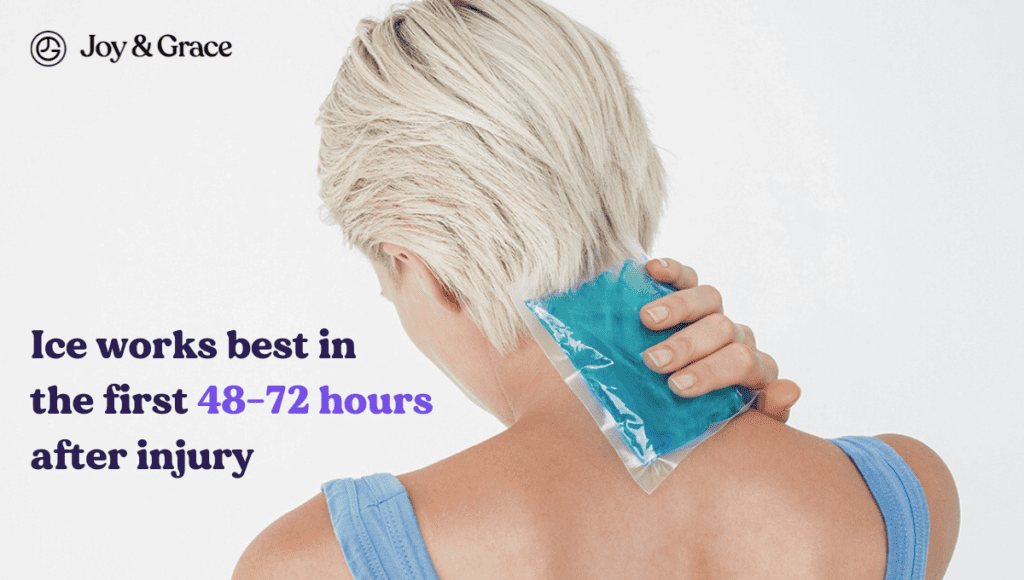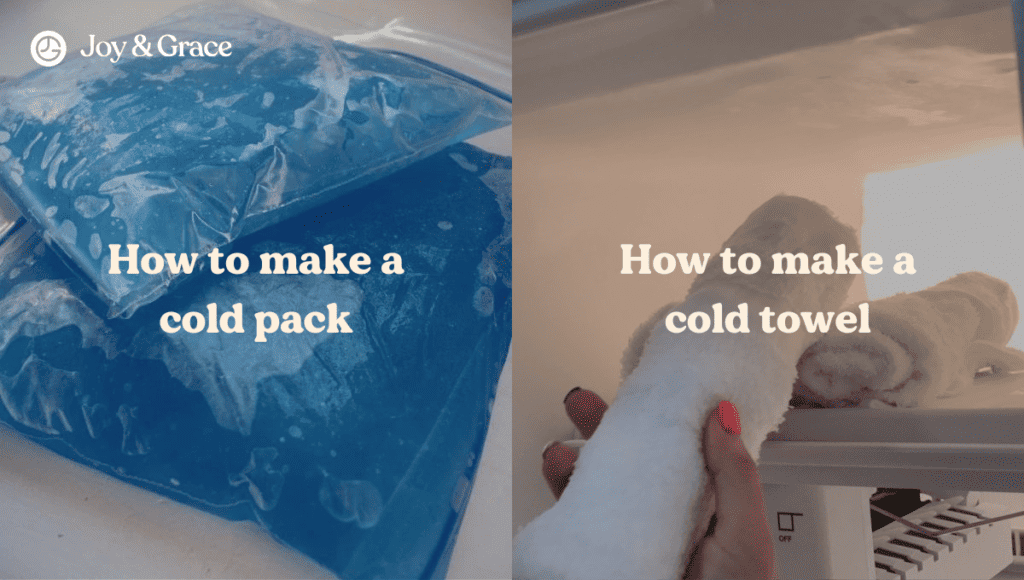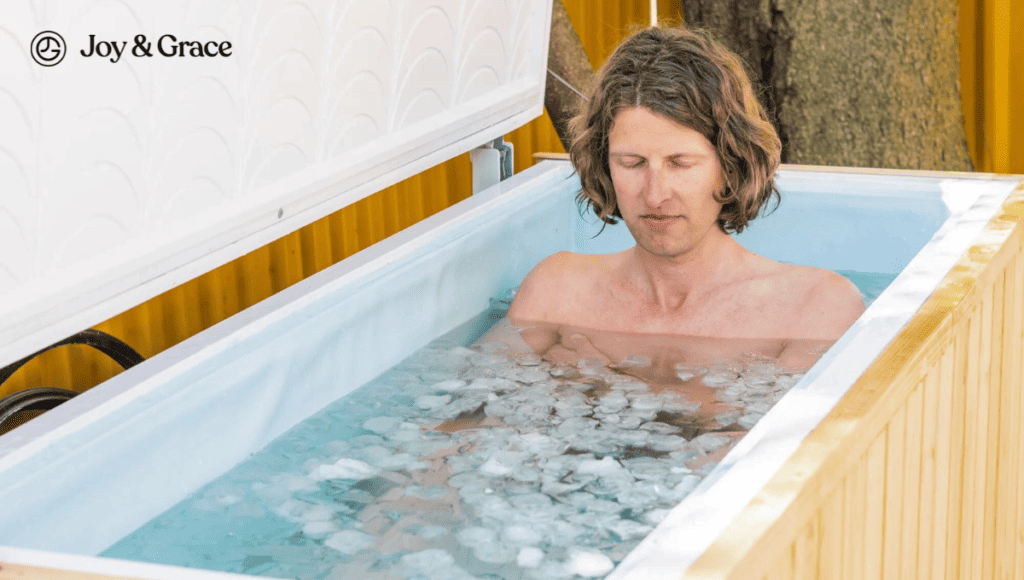If you’re suffering from shoulder pain, you’re understandably on the hunt for quick relief. For many, the solution can simply be hot or cold therapy.
But choosing between ice or heat for shoulder pain can sometimes feel like a puzzle.
Which is actually better for shoulder pain? When and how should you use them? T
his article aims to answer these questions and solve the dilemma behind the ice vs. heat debate.
What’s Better for Shoulder Pain, Heat or Ice?

The truth is that heat and ice can both be viable treatment options for shoulder pain. One isn’t always better than the other. While heat may work for a certain shoulder pain, ice may work better for another scenario.
Heat and ice are easy to apply and inexpensive. They’re widely available, too. On the surface, they might seem harmless as well—after all, what risks could simple warmth or chill present?
However, despite the promising qualities of heat and ice, you should always consult your doctor before applying them for shoulder pain. Shoulder pain may arise from various causes and be complicated to treat. The best outcome is only achieved by following a tailored treatment plan.
But what about relieving your type of shoulder pain, specifically? Let’s discuss what you ought to do.
Should I Ice or Heat My Shoulder First?
Whether you should apply ice or heat to your shoulder first depends on what’s causing your shoulder pain to begin with. Let’s take a shoulder injury as a possible cause.
If you’ve had a recent shoulder injury, use ice first. An ice pack can numb the pain receptors in the skin. It also helps fight inflammation by reducing blood flow to the shoulder. These actions can ease pain quickly.
Heat therapy, on the other hand, may be more effective a few days after your shoulder pain from an injury has simmered down a little. It has the opposite effect of ice on blood circulation. Heat is also preferred to cold therapy in cases of shoulder muscle soreness.
What you must remember is to avoid applying ice and heat to your shoulder at the same time. When used together, their effects may cancel each other out and do nothing against your pain.
Alternating between them in distinct sessions, however, is a widely accepted approach.
How Do I Alternate Heat and Ice?
A 2022 study shows alternating heat and ice therapies can also provide relief from a stiff shoulder and inflammation. Alternating heat and ice means using one after the other. Here’s a quick guide on how to do it:
- Apply a cold compress to your shoulder for 20 minutes. This narrows your blood vessels, reducing blood flow.
- Remove the cold compress and wait 2-3 hours.
- Apply a hot compress to your shoulder for 15 minutes. Heat dilates your vessels, increasing blood flow.
- Repeat steps 1-3 as needed.
Now, let's break down different scenarios to pinpoint when it's best to use ice or heat.
When to Use Ice or Heat for Shoulder Pain

As mentioned, ice and heat can help with different kinds of shoulder pain. This is because ice and heat have opposite effects on how our body processes energy (known as metabolism) and blood flow.
Deciding on using ice or heat begins with learning about their indications, which we present below.
If you’re still unsure which one’s better for you, we highly recommend you consult your doctor.
When to Use Cold Therapy: Is Ice Good for Shoulder Pain?
Yes, as discussed, ice can be good for shoulder pain relief.
Ice is one of the go-to therapies for acute (recent) shoulder injuries. That’s no coincidence! Cold therapy works best for the treatment of shoulder pain from acute injuries or trauma in the first 48-72 hours after injury. After 72 hours, its effects are much less beneficial.
When dealing with acute injuries, doctors commonly use cold therapy as part of the RICE protocol. RICE is a popular acronym that denotes four helpful steps for injury management:
- Rest. Rest and protection of the injured or sore area can aid recovery. This means avoiding any activity that adds to your shoulder pain.
- Ice. As mentioned, a cold pack or compress may decrease acute inflammation levels.
- Compression. Compression involves wrapping the injured shoulder with a tape or elastic bandage. Compression can ease swelling, improve the recovery process, and improve life quality.
- Elevation. Elevating the painful area with a pillow above the level of the heart can help minimize swelling.
Ice may also be an effective agent against:
- Acute flares of chronic pain and inflammation
- Shoulder muscle spasms
- DOMS (Delayed-onset muscle spasms)
- Shoulder stiffness (Frozen shoulder)
When to Use Heat Therapy: When Should I Apply Heat to My Shoulder?

While both ice and heat have their place, heat therapy stands out when it comes to tackling a variety of shoulder concerns.
It works best for the treatment of the following shoulder-related conditions:
- Chronic shoulder and neck pain
Chronic shoulder and neck pain is defined as discomfort persisting in these regions for more than 3-6 months. Chronic pain may be debilitating and decrease life quality.
- Stiff shoulder joints
A stiff shoulder joint may arise from a dysfunction in the main shoulder joint, often referred to by doctors as the glenohumeral joint. One of the most common causes of shoulder joint stiffness is a medical condition known as ”frozen shoulder” or adhesive capsulitis.
- Delayed-onset muscle soreness (DOMS)
You might be familiar with this one, especially if you’ve just started training. DOMS is the feeling you can get after performing intense exercise. It’s also known as “muscle fever”. In DOMS, your muscles feel sore or painful. DOMS results from temporary muscle damage and inflammation after exercise. The damaged muscles take some time to return to a normal, adapted state.
Heat can also help with a sore or stiff neck and acute lower back pain.
How Do Heat and Ice Relieve Shoulder Pain?
Now that we’ve discussed when heat and ice are preferred for shoulder pain, let’s see how they work and how you can apply them!
How Heat Therapy Works
Heat therapy essentially increases the temperature of the skin and muscles. An increased temperature:
- Increases blood flow to the shoulder by opening smaller blood vessels
- Increases metabolism
- Changes the function of pain receptors
These effects can lead to shoulder pain relief by:
- “Distracting the brain”. The changed pain receptors start sending fewer pain signals to the brain. The brain understands this change as less damage and, thus, less pain.
- Promoting tissue healing and elasticity. More blood flowing to the damaged tissues means they heal quicker. The supportive, connective tissues also become more elastic, accelerating the healing process.
How Cold Therapy Works
Cold therapy, on the other hand, intends to remove heat from a body area like the shoulder. It achieves this by decreasing all of the following:
- Blood flow to the neck
- Metabolism
- Swelling
- Muscle spasms
- Tissue elasticity
In addition, cold therapy numbs pain receptors in the skin. This effect causes the receptors to fire fewer pain impulses to the brain.
One could argue that changing how pain receptors work could be harmful. Ice and heat are symptom relievers rather than cures, after all.
The truth is that issues like muscle strain and soreness often heal on their own. Hence, reducing the pain in such cases definitely has its perks! Additionally, stress can amplify pain. Limiting this exaggerated pain response also limits stress, adding to its benefit.
How To Use Heat For Pain Relief - What is the Best Way to Heat a Shoulder?

There are many ways to heat your shoulder. Some methods may work better for you than others, so you can try them and see for yourself. The most effective heat therapies for shoulder pain include the following:
- Heating pads (such as microwaveable pads) or other types of heat packs
- Heat gels and creams
- Heated stones
- Warm baths
- Sauna
- Paraffin wax
- Infrared (IR) heat lamps
- Deep-heat therapy
You can apply heat therapy by creating a simple warm compress at home. You only need to dampen a towel with warm water and apply it to your painful shoulder. A 2013 study tells us that moist heat (such as a damp towel) may be more beneficial than dry heat against soreness.
Heat therapy may work better when combined with other shoulder pain treatment methods, such as:
- Painkiller medications
- Physical exercise
- Massage therapy
- Lifestyle changes
Is a Hot Pack Good for Shoulder Pain?
Yes, a hot pack or pad can be a good option for shoulder pain relief. Heating pads, for example, represent a type of compress that provides warmth to a body region. Heating pads come in various forms, of which electric heat pads and microwaveable pads are the most popular.
How Long Should I Heat My Shoulder?
It’s recommended to use a heating pad for no longer than 15-20 minutes at a time. You can heat your shoulder several times daily, with breaks in between.
Just ensure you’re following the usage instructions correctly. Test which heat setting works best for you and modify the warmth of the pad accordingly.
You should remember not to overheat the pad and not to fall asleep or forget you’re using the pad. Overheating or misuse can lead to dangerous burns and skin damage.
How To Use Ice For Pain Relief - What is the Best Way to Apply Ice to My Shoulder?

The best way to apply ice to your shoulder is by using a cold or ice pack, compress, or towel. Arranging a cold or ice pack is as easy as ABC. Here’s how you can do it at home:
- Put some ice cubes in a sealable plastic bag. If you don't have ice cubes readily available, you can use frozen vegetables.
- Fill the bag of ice partially with water.
- Seal the bag.
- Cover the bag with a damp cloth.
- Put the bag on your painful shoulder.
To make a cold towel:
- Soak a clean cloth or towel in cold water.
- Wring it out and fold it into a roll.
- Put it on your shoulder.
Where Do I Put Ice for Shoulder Pain?
You can apply an ice pack over your painful shoulder for 10-20 minutes at a time. Leaving it in place for longer can damage the skin by causing frostbite.
Additionally, make sure you’ve covered the pack with a damp cloth before placing it on your shoulder. Ice shouldn’t touch the skin directly, as it can cause further damage.
How Many Times a Day Should I Ice My Shoulder?
If you’ve had a sudden injury and your shoulder hurts, apply an ice or cold compress to your neck at least three times a day for as long as the pain lasts. You can follow this routine:
- Day 1:
Apply ice for 10 minutes once every hour during your waking hours. If you're awake for, say, 16 hours a day, you can apply the ice compress 16 times.
- Day 2 and 3:
Apply ice for 10 minutes every 2-3 hours while awake. For example, 16 waking hours translates to 5-8 daily applications.
- After the initial three days:
Use the ice for 15-20 minutes, specifically three times a day. This amounts to a total of three sessions: in the morning, in the afternoon, and before bed. Keep in mind that the effects of ice become weaker after the third day. If the shoulder pain persists and doesn’t get better, contact your doctor.
Additionally, you can apply a cold compress after any strenuous activity or exercise.
Frequently Asked Questions
Is an Ice Pack Better Than a Hot Pack?
As mentioned, an ice pack can sometimes be better than a hot pack. But this is not always true.
Ice packs work best against pain from fresh injuries or trauma.
Heat, on the other hand, is typically more suited for addressing long-standing pain or relaxing muscle stiffness.
Is Heat or Ice Better for Frozen Shoulder?
Frozen shoulder (also known as adhesive capsulitis) is a shoulder disorder marked by shoulder pain and stiffness. Heat and ice can both be used to treat this condition in different ways.
An ice pack can help provide temporary relief from the pain. Heat therapy, on the other hand, can be applied before performing shoulder exercises. Doing so can help boost muscle flexibility, according to some studies.
Alternating between ice and heat like this ensures you experience less pain and more benefits from physical therapy.
Should I Use Ice or Heat for Rotator Cuff Pain?
The rotator cuff is a group of muscles around the shoulder that provide stabilization and movement at the shoulder joint. Rotator cuff damage presents as shoulder pain of varying intensity.
When dealing with rotator cuff pain after a recent injury, you can place an ice pack on your shoulder. If you’re dealing with muscle soreness, heat is your friend.
However, you should know that rotator cuff pain can also arise from severe conditions, such as muscle tendon tears. In such cases, surgery might be necessary and neither heat nor ice can save the day.
Is Heat or Ice Better After a Workout?
According to a 2015 study, both heat and ice can effectively relieve pain after a strenuous workout. The study also shows that:
- Heat applied immediately after exercise was best for preserving muscle strength.
- Using heat immediately after exercise results in the least muscle damage.
- If heat and cold are not applied until 24 hours later, cold is better than heat in preserving strength and reducing tissue damage.
- Cold immediately after exercise or 24 hours later was superior to heat in reducing pain.
Are Ice Baths Good for Sore Muscles?

Ice baths are popular methods that athletes use to “cool down” after a match or race. According to a 2023 review, ice baths may indeed be effective against muscle soreness. The review shows that an ice bath after intense activity can lower specific signs of inflammation in the body, often referred to as “inflammatory markers”. However, it also states that more specific studies need to be conducted to reach a definitive conclusion.
Takeaway
Heat and ice can both be viable treatment options for shoulder pain. One isn’t always better than the other.
Whether you should apply ice or heat to your shoulder first depends on what’s causing your shoulder pain.
If you’ve had a recent shoulder injury, use ice first. Heat therapy may be more effective a few days after your shoulder pain from an injury has simmered down a little.
You can also alternate ice and heat but do not apply them to your shoulder at the same time.
Cold therapy works best for the treatment of shoulder pain from acute injuries or trauma in the first 48-72 hours after injury. After 72 hours, its effects are less beneficial.
Heat therapy works best for the treatment of the following shoulder conditions:
- Chronic shoulder and neck pain
- Stiff joints
- Delayed-onset muscle soreness (DOMS)
The most effective heat therapies for shoulder pain include the following:
- Heating pads or packs
- Soft-heated packs filled with grain (microwaveable pads)
- Heat gel packs and creams
- Heated stones
- Hot baths
- Sauna
- Paraffin wax
- Infrared (IR) heat lamps
- Deep-heat therapy
It’s recommended to use a heating pad for no longer than 15-20 minutes at a time. Overheating or misuse can lead to dangerous burns and skin damage.
The best way to apply ice to your shoulder is by using a cold or ice pack, compress, or towel.
You can apply an ice pack over your painful shoulder for 10-20 minutes at a time. Cover the pack with a damp cloth before placing it on your shoulder. Not covering the pack or leaving it in place longer can cause frostbite.















